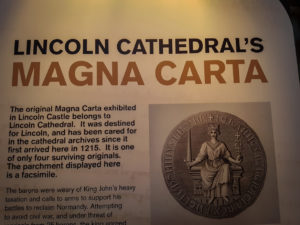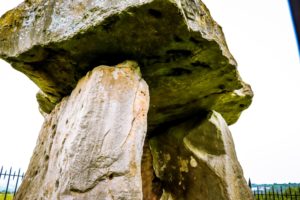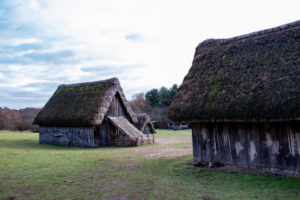Lincoln Castle is a major Norman castle constructed in Lincoln, England, during the late 11th century by William the Conqueror on the site of a pre-existing Roman fortress. The castle is unusual in that it has two mottes. It is one of only two such castles in the country, the other being at Lewes in East Sussex.
After William the Conqueror defeated Harold Godwinson and the English at the Battle of Hastings on 14 October 1066, he continued to face resistance to his rule in the north of England. For a number of years, William’s position was very insecure. In order to project his influence northwards to control the people of the Danelaw (an area that had for a time been under the control of Scandinavian settlers), he constructed a number of major castles in the North and Midlands of England: including those at Cambridge, Huntingdon, Lincoln, Nottingham, Warwick and York.
When William reached Lincoln (one of the country’s major settlements), he found a Viking commercial and trading center with a population of 6,000 to 8,000. The remains of the old Roman walled fortress, located 200 ft above the countryside to the south and west, proved an ideal strategic position to construct a new castle. Lincoln was also a vital strategic crossroads of the following routes (largely the same routes which influenced the siting of the Roman fort):
- Ermine Street – a major Roman road and England’s main north-south route, connecting London and York.
- Fosse Way – another important Roman route connecting Lincoln with the city of Leicester and the south-west of England.
- The valley of the River Trent (to the west and southwest) – a major river affording access to the River Ouse, and thus the major city of York.
- The River Witham – a waterway connected to the River Trent (via the Fossdyke Roman canal at Torksey) and to the North Sea via The Wash.
- The Lincolnshire Wolds – an upland area to the northeast of Lincoln, which overlooks the Lincolnshire Marsh beyond.
A castle here could guard several of the main strategic routes and form part of a network of strongholds of the Norman kingdom, in the former Danish Mercia, roughly the area today referred to as the East Midlands, to control the country internally.
The Domesday Survey of 1086 directly records 48 castles in England, with two in Lincolnshire including one in Lincoln. Building a castle within an existing settlement sometimes meant existing structures had to be removed: of the castles noted in the Domesday Book, thirteen included references to the property being destroyed to make way for the castle. In Lincoln’s case 166 “unoccupied residences” were pulled down to clear the area on which the castle would be built
In 2012 the “Lincoln Castle Revealed” project, a three-year program of renovation, began at the castle. Work involved creating a new exhibition center in which to display Lincoln’s copy of the Magna Carta, building visitor facilities, and opening sections of the prison within the castle to the public. The scheme was completed in April 2015 to coincide with the 800th anniversary of the sealing of the Magna Carta. The Lincoln Castle Magna Carta is one of the four surviving originals, sealed by King John after his meeting with the Barons at Runnymede in 1215, and is accompanied by an exhibition explaining the origin of the Magna Carta and its far-reaching effects.










